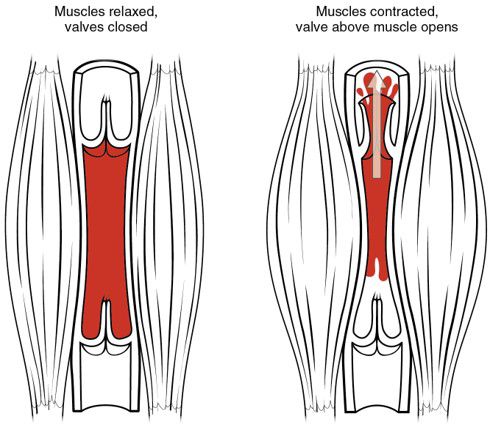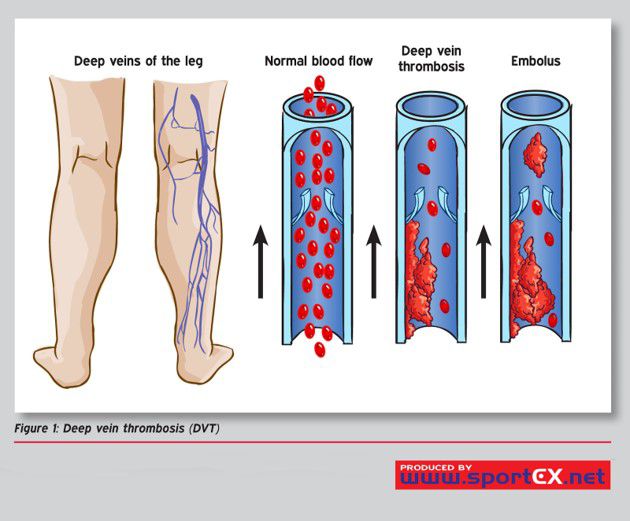
People are more mobile today….everyday traveling to more and more places by plane, train, and automobile. Now, more than ever, vast numbers of business people and pleasure seekers cross the globe on a daily basis for work, opportunity and adventure.
As difficult (and as exciting as travel can be) extended periods of immobility during these long trips carries a hidden risk…a sometime fatal risk…especially if one is squished into the middle seat in the back of the plane for hours on end making it difficult to get up and move: the risk of developing a DVT (more commonly known as a blood clot) in the deep veins of their legs.
Veins are a network of blood vessels that work to return blood TO the heart (as compared to arteries which are blood vessels that transfer blood AWAY from the heart) Veins work by using a series of very small valves to keep blood flowing in a single direction and, generally, prevent blood from going back towards the ground even though gravity exerts a constant force to pull the blood down.
One’s calf muscles play a critical role in the venous system. These muscles, when activated, act like a “pump” to help squeeze blood back up through the veins and back up to their heart. When immobile,especially common during long periods of travel, the muscles cannot help the veins do their job, and the blood just sits in your legs. Blood naturally has proteins in it that helps it clot so that you don’t bleed to death after a cut or injury. When these clots develop, the leg can become swollen and painful. Many people develop leg swelling during long plane or car travel. However, one big differentiating factor between that kind of swelling and a DVT is that a DVT usually only happens on one leg. Often, the swelling persists for more than a little while after you get moving again. In addition, the leg, especially in the area of the calf muscle, is often tender when squeezed.

In the event that you experience the kind of symptoms explained above it is vitally important to go to the doctor or emergency room immediately. The most feared complication of a DVT is when the clot in the leg travels to the lung causing a PE—a pulmonary embolus. This can cause shortness of breath, chest pain, and even death. In fact, PE is the third most common cause of death in the United States, and few regular people know about it. If you do think you have a blood clot, it is important to get an ultrasound to diagnose it and to be started on blood thinners. It is also very important to see a doctor who specializes in blood clots, often a vascular surgeon, to evaluate whether or not there is another reason in addition to travel that this may have happened. Occasionally, having a DVT is a sign of a more serious underlying issue, and the travel just precipitated its occurrence.

At SBVC, our physicians and surgeons aggressively work up patients who present with the symptoms of a DVT to make sure there is no other contributing factor. We work closely with your primary care doctor, and occasionally call in hematologists (specialists in blood problems) to consult as well. If you or anyone you know suffers from non resolving swollen calf’s or legs following a long flight please call our office at 408-376-3626 to schedule an immediate visit to determine the extent of and appropriate treatment for DVT.
To learn more about blood clots and flying click on the attached link to visit a more detailed article on healthline.com